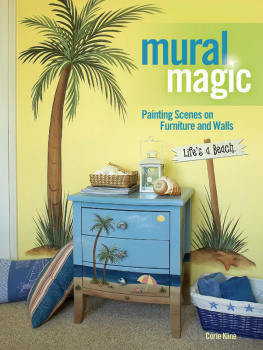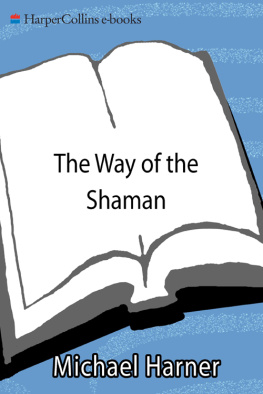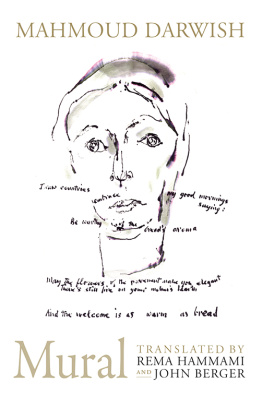THE LINDA SCHELE SERIES IN MAYA AND PRE-COLUMBIAN STUDIES
THE WHITE SHAMAN MURAL
AN ENDURING CREATION NARRATIVE IN THE ROCK ART OF THE LOWER PECOS
CAROLYN E. BOYD, WITH CONTRIBUTIONS BY KIM COX

UNIVERSITY OF TEXAS PRESS
AUSTIN
Copyright 2016 by the University of Texas Press
All rights reserved
First edition, 2016
All illustrations are by the author.
All photographs are by Shumla Archaeological Research and Education Center unless otherwise noted.
Requests for permission to reproduce material from this work should be sent to:
Permissions
University of Texas Press
P.O. Box 7819
Austin, TX 78713-7819
http://utpress.utexas.edu/index.php/rp-form
Library of Congress Cataloging-in-Publication Data
Boyd, Carolyn E., 1958 author. Cox, Kim, contributor.
The White Shaman mural : an enduring creation narrative in the rock art of the Lower Pecos / Carolyn E. Boyd ; with contributions by Kim Cox.
Linda Schele series in Maya and pre-Columbian studies.
First edition. Austin : University of Texas Press, 2016.
Includes bibliographical references and index.
LCCN 2016003032 (print) LCCN 2016004114 (ebook)
ISBN 9781477310304 (cloth : alk. paper)
ISBN 9781477311196 (library e-book)
ISBN 9781477311202 (non-library e-book)
Indians of North AmericaPecos River Valley (N.M. and Tex.)Antiquities. Indian artPecos River Valley (N.M. and Tex.) PetroglyphsPecos River Valley (N.M. and Tex.) Rock paintingsPecos River Valley (N.M. and Tex.) Pecos River Valley (N.M. and Tex.)Antiquities.
LCC E78.T4 B69 2016 (print) LCC E78.T4 (ebook)
DDC 976.4/901dc23
LC record available at http://lccn.loc.gov/2016003032
TO ALFREDO LPEZ AUSTIN,
WHOSE BRILLIANT SCHOLARSHIP LAID THE FOUNDATION
FOR THIS BOOK. THANK YOU FOR YOUR GUIDANCE AND
ENCOURAGEMENT IN OUR SEARCH FOR THE ARCHAIC CORE.
IN MEMORY OF LINDA SCHELE,
WHO ENCOURAGED ME TO LOOK SOUTH AND WHOSE
TENACIOUS SPIRIT SPURRED ME ON.
AND IN LOVING MEMORY OF MY DEAR FRIEND AND COUNSELOR,
JO ANN HARRIS.
CONTENTS
ILLUSTRATIONS
FIGURES
TABLES
ACKNOWLEDGMENTS
First and foremost I thank my collaborator, Kim A. Cox. Without him, this book would never have been possible. In 2007 Kim began encouraging me to publish a monograph about the White Shaman mural. His encouragement turned to dogged insistence, and here we are, eight years later, with a finished manuscript. Kims keen intellect and knowledge of Mesoamerican mythology led to many of the discoveries presented in the pages that follow. He has been a tireless editor: reading, commenting on, and contributing to each chapter more times than I can count. He is a true friend and colleague to whom I am eternally grateful.
Kim and I thank Gale Galloway and the Rock Art Foundation for their preservation and protection of the White Shaman site. Without their early, continuing, and often thankless efforts, there would be no White Shaman mural. The archaeological community and, indeed, the world owe them a huge debt of gratitude. We would especially like to thank Greg Williams, executive director of the Rock Art Foundation, for his friendship and his gracious and unfailing support.
There are no words to express the depth of gratitude I have for the incredible people who helped with the documentation and analysis of the White Shaman mural. First and foremost is the staff, both past and present, of the Shumla Archaeological Research and Education Center. I especially thank Amanda Castaeda, Charles Koenig, Ben Dwyer, Vicky Muoz, and Jerod Roberts, who not only worked tirelessly with me in the field and in the lab, but also carried Shumlas documentation efforts forward while I was sequestered to write. Amanda and Charles were instrumental in developing and refining Shumlas rock art recording methods. Their gentle spirits, good humor, and incredible talent made even the hottest day in the desert not only bearable, but delightful. Vicky, building on the foundation established by Ben Dwyer, created a powerful searchable rock art database. Her abilities never cease to amaze me. Jerod, who took almost all the photographs accompanying my illustrations in , worked tirelessly to make certain the graphics were the very best they could be for the book. I consider it a privilege to work alongside these talented young people.
I also greatly appreciate the Shumla IT specialist, Keith Mann, for keeping the computers and servers operational, and for making sure every version of the manuscript was backed up in several locations. I will always be indebted to Brenda Norman, who managed the Shumla offices with the utmost care while we were writing the book, and to Missy Harrington, who worked tirelessly on edits to the bibliography.
I thank Karen Steelman (Department of Chemistry at the University of Central Arkansas) for her help documenting and analyzing the White Shaman mural, and for her camaraderie and life-giving encouragement. Mark Willis, the MacGyver of archaeology, introduced us to virtually all of the innovative technologies we are using today to record rock art. I am forever grateful to Mark and Karen for all that they have done and continue to do not just for Shumla, but for the global rock art community. Bill Sontag conducted extensive background research into the White Shaman Galloway Preserve and conducted hours of interviews with past and present stakeholders of the property. The audio recordings he produced of these oral histories are irreplaceable.
I would also like to thank the multitude of volunteers, students, and student interns that have worked with us in the Lower Pecos. Their numbers are too great to mention here, but I remember the contributions of each with special fondness and gratitude. They were not only helpful, but also inspirational.
If not for the support and understanding of the Shumla board of directors, this work would never have been completed: Emil Zuberbueler, Elton Prewitt, David Graf, Bill Cauthorn, Lacy Jemmott, Judy VanCleve, and the late, but never forgotten, Jo Ann Harris. Jo Ann, who served as Shumla vice president since 2004, was a continual source of moral support and sage advice. She was a dear friend and my love for her is woven throughout the pages of this book.
Jessica Lee, former Shumla board member and now executive director, was of invaluable assistance. She read and edited the manuscript, and gently spurred me on over the past years. Several wonderful individuals contributed maps and photographs for the book: Mark Willis, Kerza Prewitt, Bob Mark, Evelyn Billo, Jack Johnson, Chester Leeds, Dean Liu, and Jean Clottes.
This work benefitted greatly from the comments offered by several scholars. David Madsen provided very helpful organization recommendations. Elton Prewitt was a reliable sounding board, encourager, and advisor throughout the writing process. Francisco Marcos-Marn contributed greatly to our discussion of linguistics and was always there to challenge us, inspire us, and answer questions. We would especially like to thank Robert A. Ricklis for comments on the manuscript and for his lifelong inspiration in the pursuit of archaeology. We thank Steve Black for his camaraderie and collaboration in the archaeology of the Lower Pecos, and for offering comments on an earlier version of the manuscript. We feel honored to be working alongside him in the cause. We are deeply grateful to Thomas Guderjan and Carolyn Tate for their astute and helpful comments on the original manuscript submitted to the University of Texas Press, and to Alma Nabhan for her assistance with the index. Last, but far from least, is Alfredo Lpez Austin, whose encouragement and insights have been a source of immeasurable inspiration and to whom this book is dedicated.
Next page







